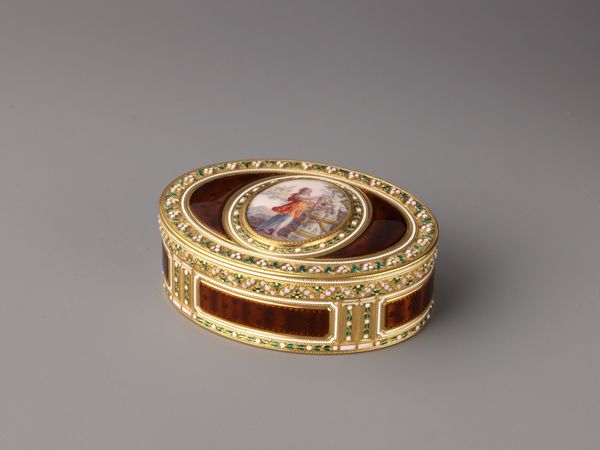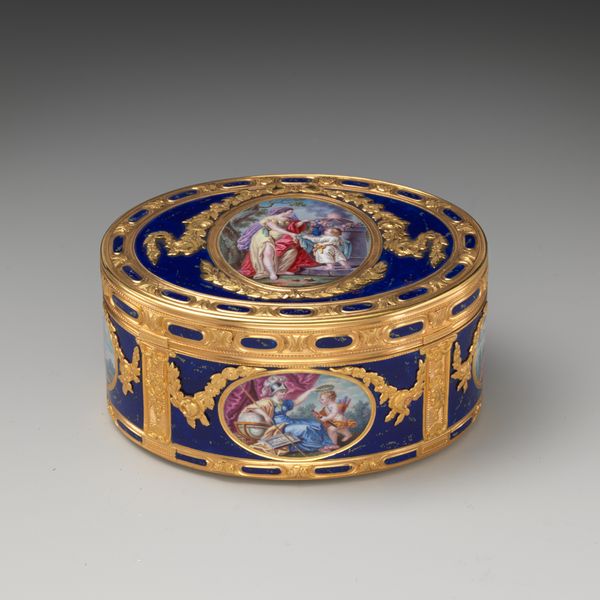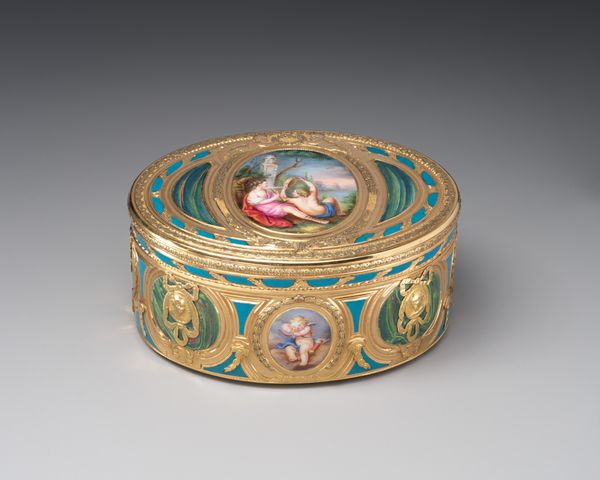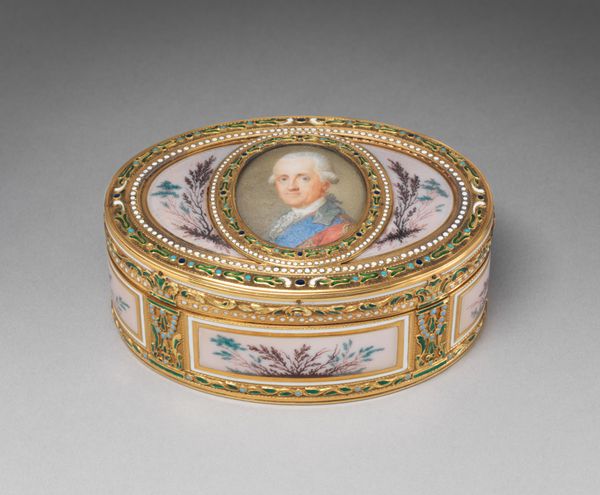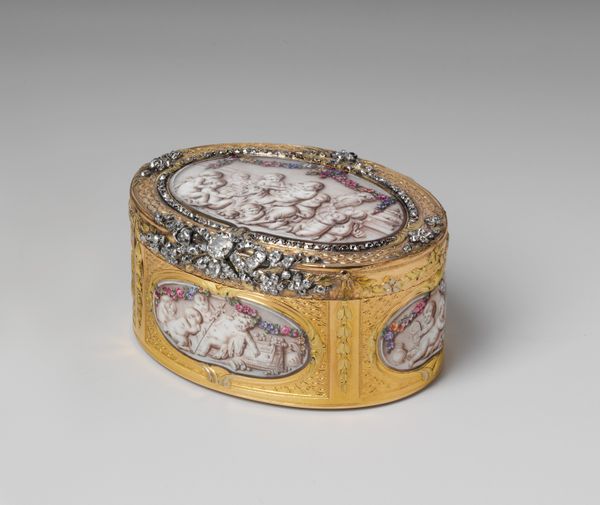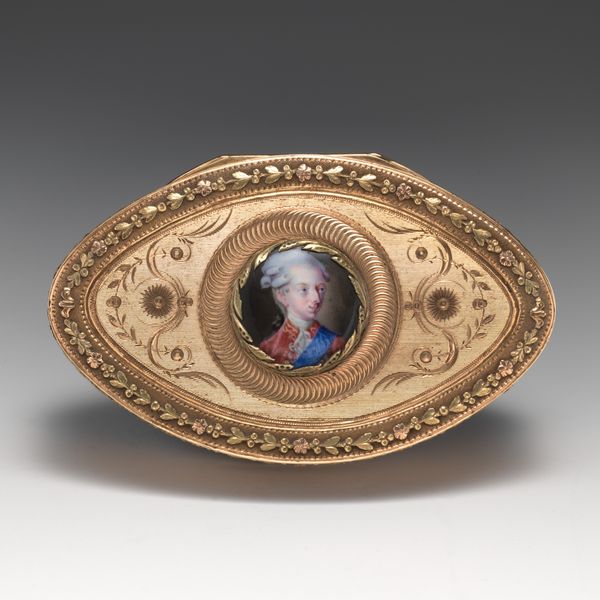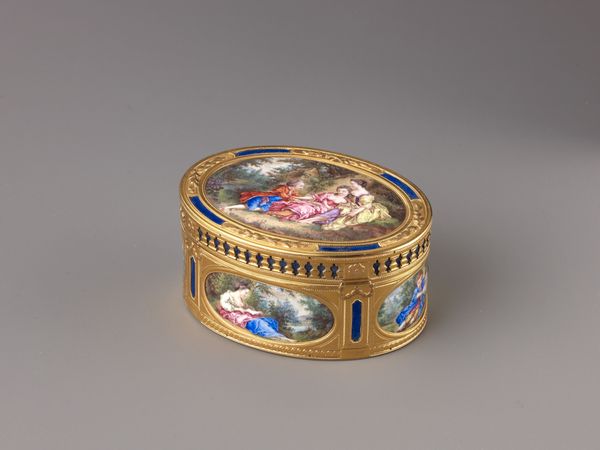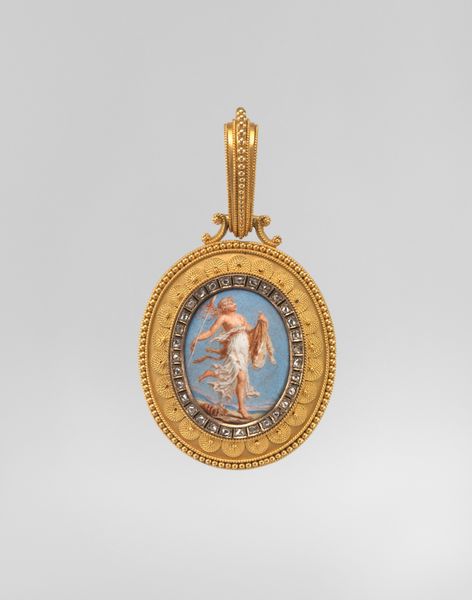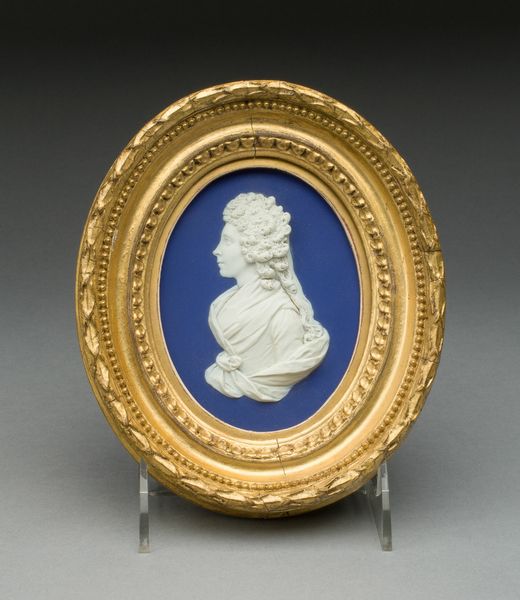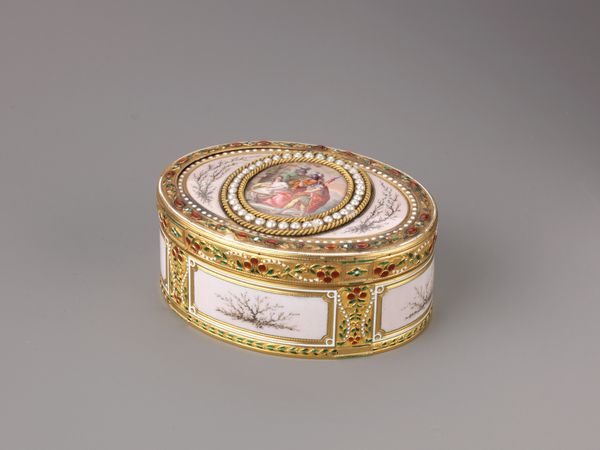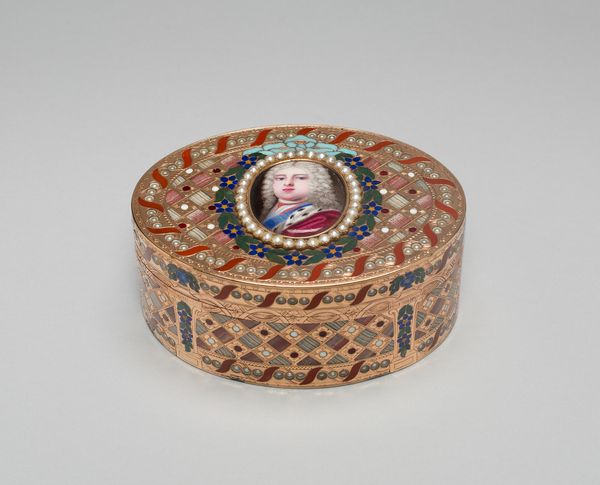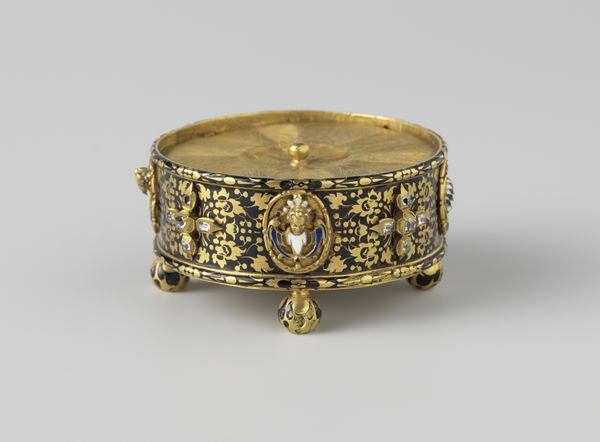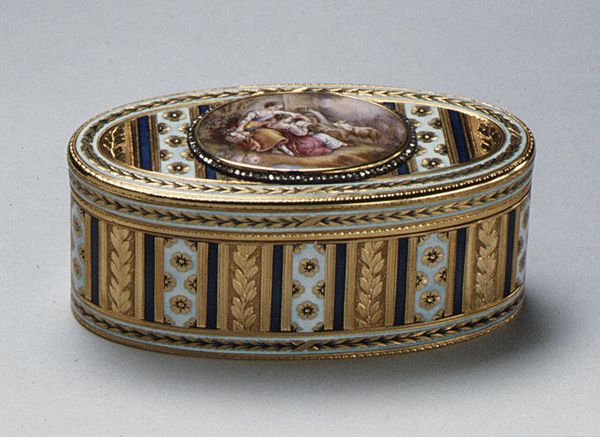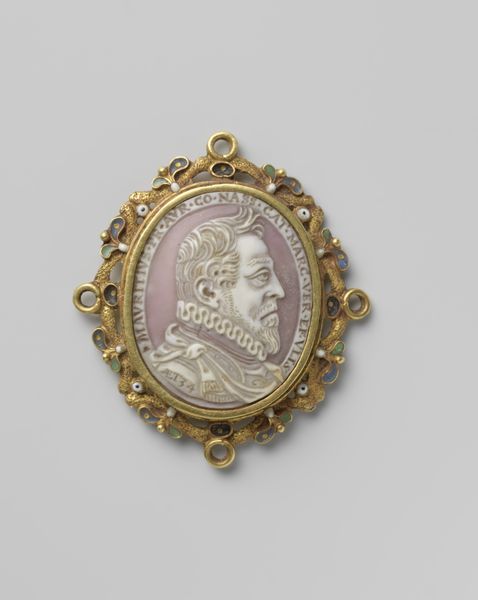
Snuffbox with portrait of Louis XVI (1754–1793), King of France 1779 - 1780
0:00
0:00
Dimensions: 1 3/8 x 3 1/4 x 2 1/2 in. (3.5 x 8.3 x 6.4cm); Miniature: oval, 1 1/4 x 1 in. (32 x 25 mm)
Copyright: Public Domain
Curator: Look at the sheer opulence of this snuffbox, currently residing at the Metropolitan Museum of Art. Crafted between 1779 and 1780 by Joseph Etienne Blerzy, it showcases a portrait of Louis XVI. The materials alone speak volumes: gold, metal, and mixed media combine to create a truly stunning miniature. Editor: My initial reaction is that it is cold and meticulously controlled. The glittering frame surrounding the royal portrait creates a sense of rigid formality. What’s interesting to me is how the smooth, dark enamel on the box contrasts so sharply with that glittering miniature. Curator: The portrait serves not only as an image of the King, but also an explicit endorsement of the monarchical power in the period of high Baroque, when snuff-taking became common, if not an emblem of power among the aristocrats. Notice how it projects controlled extravagance through specific sartorial choices and idealized facial expressions. Editor: Yes, it’s as if every diamond, every brushstroke, reinforces a specific, carefully constructed image of power. Considering the historical context, that sense of absolute control almost feels like a facade. It foreshadows the French Revolution; the portrait and diamonds scream wealth and distance while hinting at a looming crisis. The smallness and darkness almost evoke mortality as opposed to invincibility. Curator: You've hit on something important there: it seems the diamonds encircling Louis hint at his importance as monarch, as do all royal portraits within keepsakes during this time. Yet, they were literally overshadowed, in the case of Louis, due to political circumstances as well as later events. These objects stand as relics of the past because they tell us who Louis was through the eyes of the culture he reigned over. The question of power becomes intertwined with memory here, not just of an individual but of an era. Editor: Right, the work's value lies precisely in the tension between intention and reception, the clash between inherent value, like the value of gold and precious stones, versus emotional associations. As the diamonds reflect the face and, perhaps, even more, reflect a fragile power structure, the dark ground from where that face emanates almost suggests inevitable loss. It's beautiful and terrible. Curator: Beautifully put! The image, embedded within the encrusted box, has certainly triggered an exploration of not just aesthetic tastes of 18th century, but of how symbols embody fleeting realities and the paradoxes of power and decay. Editor: Indeed. Considering our discussion, next time I use my pocket mirror I might consider whose face is on the box it arrived in and if there are emeralds reflecting on their forehead.
Comments
No comments
Be the first to comment and join the conversation on the ultimate creative platform.
